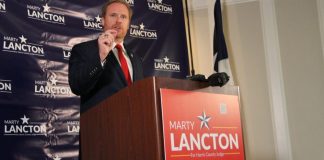The shocking jobs report on Friday wasn’t the only red flag. Indicators from the past week paint an overall picture of an economy that’s headed for a downturn, according to Moody’s Analytics chief economist Mark Zandi.
After months of looking remarkably resilient in the face of President Donald Trump’s tariffs, the economic outlook has suddenly turned gloomier.
“The economy is on the precipice of recession. That’s the clear takeaway from last week’s economic data dump,” Zandi wrote in a series of posts on X on Sunday. “Consumer spending has flatlined, construction and manufacturing are contracting, and employment is set to fall. And with inflation on the rise, it is tough for the Fed to come to the rescue.”
Payrolls grew by just 73,000 last month, well below forecasts for about 100,000. Meanwhile, May’s tally was revised down from 144,000 to 19,000, and June’s total was slashed from 147,000 to just 14,000, meaning the average gain over the past three months is now only 35,000.
While Trump has claimed without evidence that the jobs data was “rigged” and fired the head of the agency that produces the report, Zandi noted that data often gets big revisions when the economy is at an inflection point, like a recession.
Separate reports also held warning signs. GDP rebounded more robustly than expected in the second quarter, but a metric that strips out the impact of foreign trade and looks instead at final domestic demand indicated slowing.
The personal consumption expenditures report showed core inflation accelerated to 2.8%, further above the Fed’s 2% target, and that consumer spending rose less than expected in June. Fed policymakers have held off on interest rate cuts as they wait to see how much tariffs impact inflation.
Meanwhile, construction spending continued to decline in June amid a sharp drop in single-family homes. And the Institute for Supply Management’s manufacturing activity index for July dipped, indicating the sector contracted at a quicker pace.
For now, the Atlanta Fed’s GDP tracker points to continued growth, though it’s expected to decelerate to 2.1% in the third quarter from 3% in the second quarter.
There are also no signs of mass layoffs, and the unemployment rate has barely changed, bouncing in a tight range between 4% and 4.2% for more than a year.
But Zandi said the jobless rate is still low only because the size of the labor force has stagnated. That’s as the foreign-born workforce has plunged by 1.2 million in the last six months amid Trump’s immigration crackdown, while the overall labor participation rate has slipped.
As the supply of labor has softened, so has the demand. Zandi pointed to an “economy-wide hiring freeze, particularly for recent graduates.” The upshot is that the so-called neutral level of job gains needed to absorb new workers—and keep the unemployment rate steady—is now much lower.
“It’s no mystery why the economy is struggling; blame increasing U.S. tariffs and highly restrictive immigration policy,” Zandi added. “The tariffs are cutting increasingly deeply into the profits of American companies and the purchasing power of American households. Fewer immigrant workers means a smaller economy.”
On Friday, economists at JPMorgan similarly sounded the alarm on a potential downturn. They noted that jobs data show hiring in the private sector has cooled to an average of just 52,000 in the last three months, with sectors outside health and education stalling.
Coupled with the lack of any signs that unwanted separations are surging due to immigration policy, this is a strong signal that business demand for labor has cooled, they explained.
“We have consistently emphasized that a slide in labor demand of this magnitude is a recession warning signal,” JPMorgan added. “Firms normally maintain hiring gains through growth downshifts they perceive as transitory. In episodes when labor demand slides with a growth downshift, it is often a precursor to retrenchment.”
Great Job Jason Ma & the Team @ Fortune | FORTUNE Source link for sharing this story.





